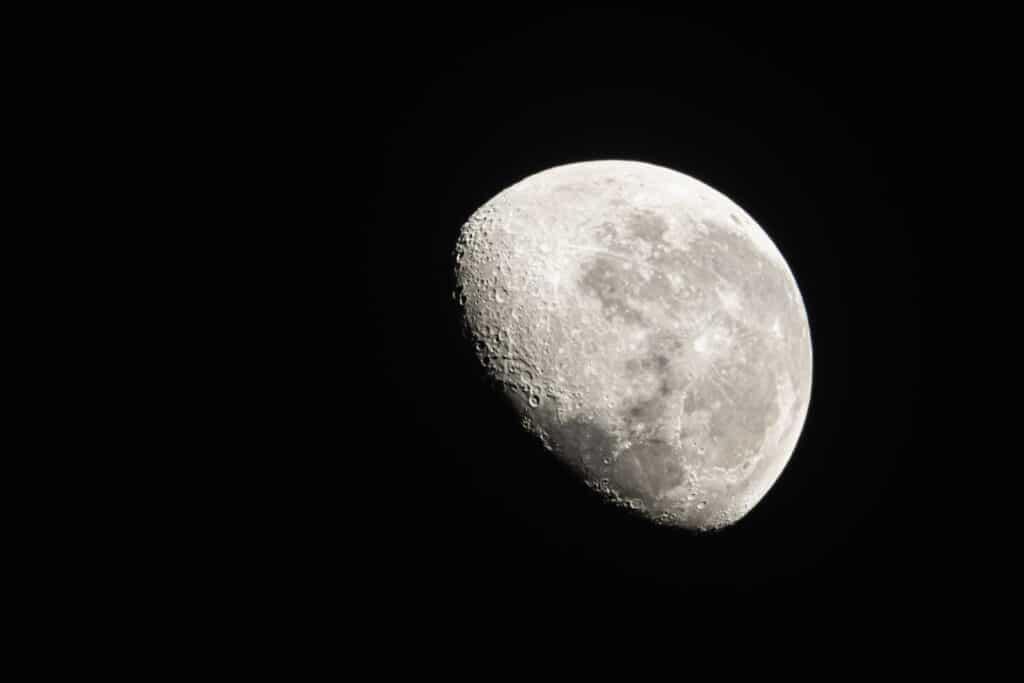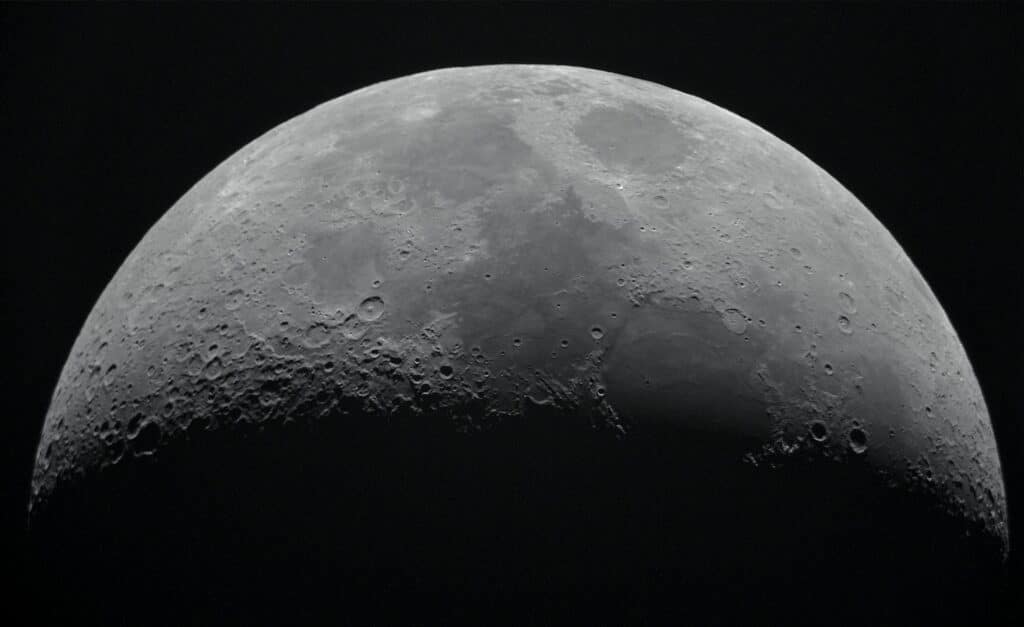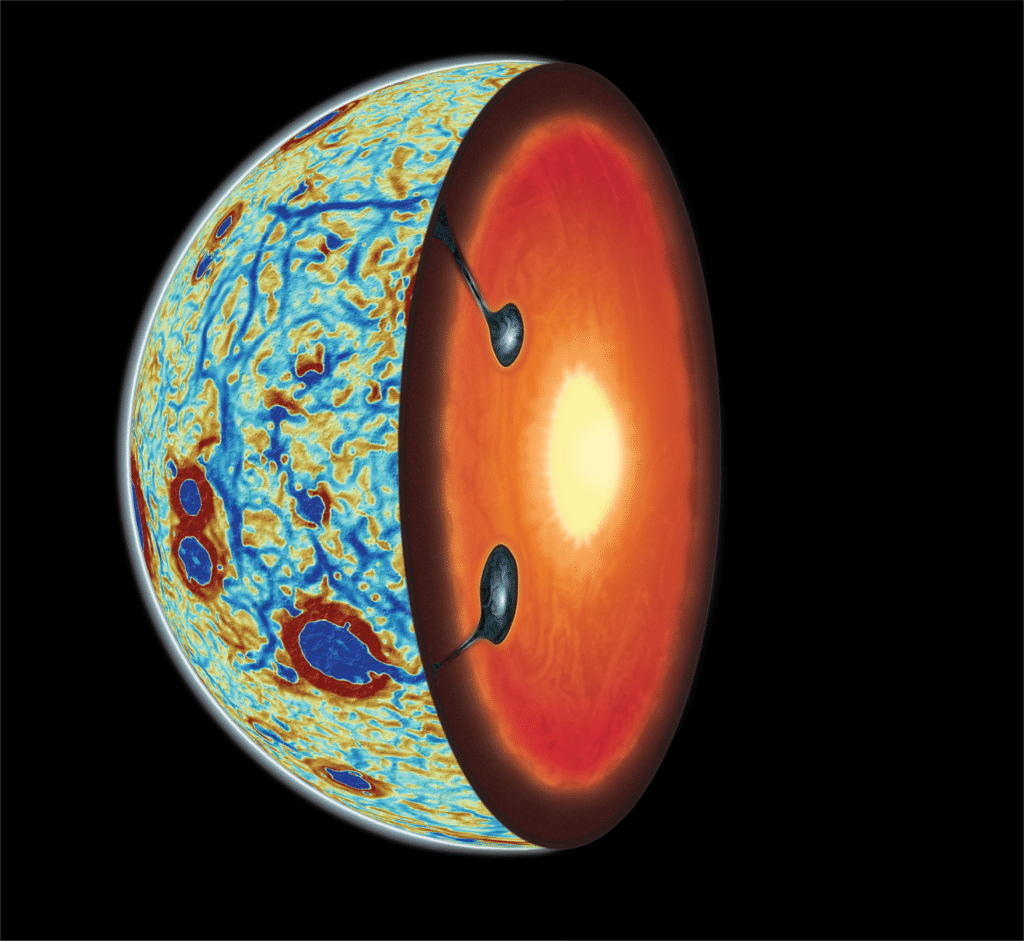It’s hard not to gaze up at a full Moon on a clear night, marveling at its luminous beauty. But have you ever wondered about the secrets hidden beneath its cratered surface? As it turns out, the Moon has quite a story to tell — one that involves a dramatic overturn of its interior, leaving behind a lopsided legacy that scientists are still unraveling today.
The prevailing theory of the Moon’s origin goes something like this: Around 4.5 billion years ago, a small planet about the size of Mars collided with the young Earth, spewing molten rock into space. Over time, this debris coalesced, cooled, and solidified, forming the Moon we know and love. But the details of how exactly this happened have remained a bit of a mystery — until now.

Researchers at the University of Arizona’s Lunar and Planetary Laboratory have shed new light on this cosmic tale, offering insights into the Moon’s peculiar asymmetry. Their findings, published in the journal Nature Geoscience, suggest that the Moon’s earliest history is written in its interior, just waiting to be deciphered.
What’s the deal with the Moon’s lopsided nature? For starters, the side of the Moon that faces Earth — the near side — is markedly different from the far side. It’s lower in elevation, has a thinner crust, and is largely covered in dark lava flows known as mare. It also boasts high concentrations of typically rare elements like titanium and thorium. The far side, on the other hand, is a completely different story.
To understand why, we need to go back to the Moon’s fiery beginnings. Scientists believe that the newly-formed Moon was covered by a global magma ocean — a sea of molten rock that gradually cooled and solidified, forming the Moon’s mantle and bright crust. But deep below the surface, things were far from settled.
“Because these heavy minerals are denser than the mantle underneath, it creates a gravitational instability, and you would expect this layer to sink deeper into the Moon’s interior,” says study author Weigang Liang, who led the research as part of his doctoral work at the University of Arizona Lunar and Planetary Laboratory, in a media release.
And sink it did — but not before migrating to the Moon’s near side, possibly triggered by a giant impact on the far side. As this dense, titanium-rich material cascaded into the lunar interior like a network of underground waterfalls, it left behind a telltale pattern of intersecting linear remnants beneath the crust.
“When we saw those model predictions, it was like a lightbulb went on, because we see the exact same pattern when we look at subtle variations in the Moon’s gravity field, revealing a network of dense material lurking below the crust,” explains study co-author Jeff Andrews-Hanna, associate professor at the University of Arizona Lunar and Planetary Laboratory.
These gravity anomalies, detected by NASA’s GRAIL mission, which orbited the Moon between 2011 and 2012, provide a crucial piece of the puzzle. By comparing simulations of the sinking ilmenite-rich layer to the GRAIL data, the researchers found a remarkable consistency between the models and the observations.
“Our analyses show that the models and data are telling one remarkably consistent story,” says Liang said. “Ilmenite materials migrated to the near side and sunk into the interior in sheetlike cascades, leaving behind a vestige that causes anomalies in the Moon’s gravity field, as seen by GRAIL.”
The timing of this dramatic overturn is also key. Researchers suggest that the ilmenite-rich layer sank prior to 4.22 billion years ago, based on the fact that the linear gravity anomalies are interrupted by the largest and oldest impact basins on the near side.
“Analyzing these variations in the moon’s gravity field allowed us to peek under the moon’s surface and see what lies beneath,” notes study co-lead author Adrien Broquet, from the German Aerospace Center in Berlin.
The implications of this study extend beyond our understanding of the Moon’s evolution. Researchers believe that their findings could also shed light on the geologic evolution of other planetary bodies, such as Earth or Mars.
“For the first time we have physical evidence showing us what was happening in the Moon’s interior during this critical stage in its evolution, and that’s really exciting,” says Andrews-Hanna. “It turns out that the Moon’s earliest history is written below the surface, and it just took the right combination of models and data to unveil that story.”

As we look to the future of lunar exploration, with the Artemis program set to return astronauts to the Moon, this newfound understanding of our celestial neighbor takes on even greater significance.
“When the Artemis astronauts eventually land on the moon to begin a new era of human exploration, we will have a very different understanding of our neighbor than we did when the Apollo astronauts first set foot on it,” concludes Liang.












